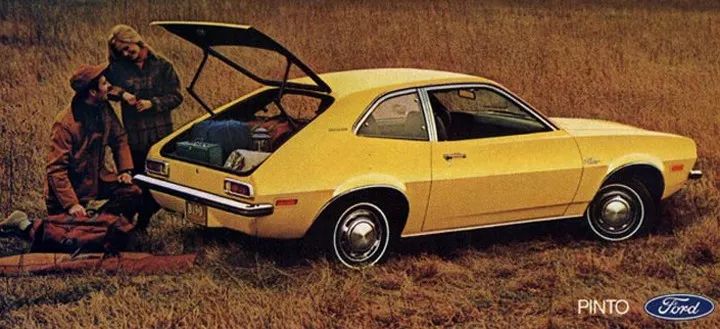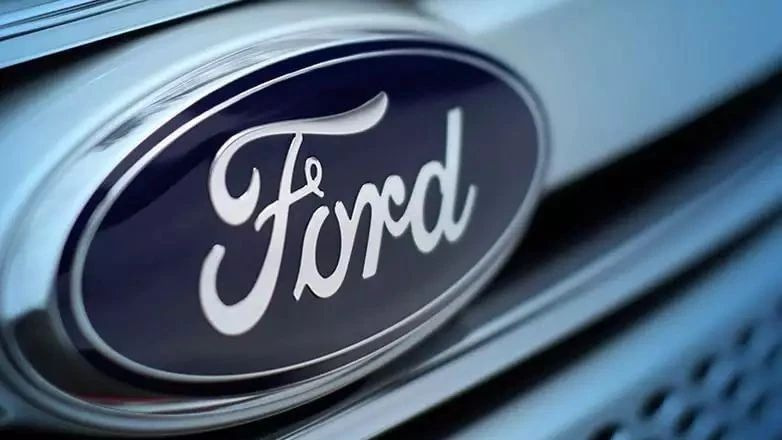Although Tesla Model 3 is rising in popularity these days, Elon Musk has always been a bit resentful about not being able to give this car a satisfactory name, so he always looks for opportunities to mock Ford, who he feels is working against him on car model names.
When the weekly output exceeded 5,000, during an interview, he couldn’t help but compare his own energetic factory to Ford’s, and sarcastically referred to Ford’s factory as a funeral home.
When investors questioned Tesla’s burning of money, he directly answered that they should go buy Ford’s stock.
But Ford feels even worse. Being mocked by a young upstart as a century-old company has filled them with envy, jealousy and hatred.
“Congratulations on producing over 5,000 cars a week and setting up a temporary tent for production. It only takes me 53 seconds to assemble an F-150.”
“So what if you have an electric pickup truck? My F-150 had those features you boasted about as early as 2015. By the way, I heard that all of your service vehicles use my pickup trucks and cargo vans, am I right?”
“All you do is burn money every day, while I have experienced economic crisis and am good at making money, you understand?”
But all this talk is just pointless, and Tesla has still surpassed Ford in becoming the highest-valued automaker in the United States with a market value of $52.9 billion.
Why?
Because the investors who support Tesla believe that Musk will revolutionize the entire automotive and energy industries.
This is something Ford did a century ago.
How ironic.
Why did Ford’s glorious Model T decline?
A classic car can go through many years of constant innovation and upgrades.
The glory of the Ford Model T is well-known, but its dismal fate is rarely mentioned.
By 1926, there were a total of 25 million cars in the world. In the 19 years before the T Model car was discontinued in 1927, a total of 15 million of them were sold.
In the 10 years after the Model T existed, its production had already accounted for half of the production of American cars, and its production rate had reached one car every 10 seconds.
But at the beginning, the T Model car also encountered a “production hell” and was unable to meet the overwhelming demand. After some simple modifications to the factory, Ford produced over ten thousand T Model cars in nine months. As for the key industrial transformation landmark-the assembly line-that happened almost two years later.
With such high sales figures and production efficiency, why did the Model T only last for 19 years?
Because Ford refused to embrace change.No need to talk about assembly upgrades or even colors since Ford only offered one choice for Model T – black. During its 19-year lifespan, Model T underwent almost no changes.
But the evolution of the times did not stop simply because you introduced the standardized assembly line, leading the entire auto industry into the fuel car market. The market demands kept moving forward.
As technologies like hydraulic brakes fell behind in the auto industry, Ford gradually handed over the position that had half of the American auto market to General Motors. In 1919, General Motors’ Chevrolet only accounted for 10% of the market share; in 1923, it reached 34%. By 1927, Ford had to reluctantly retire Model T while General Motors’ Chevrolet had acquired 85% of the market share.
Until today, Ford has never been able to reclaim its position as the largest auto company in the US.
Despite its tragic ending, Model T remains Ford’s most proud model. That’s why Ford has an unusual attachment to Model T, which is apparent in later naming conventions of its models.
Estimates suggest that Musk’s naming format for Tesla models is based on Ford’s. Ford’s cars back then already covered a lot of letters, from Model A, B, C, F, K, N, R to S, with Model AC considered to be unconventional. Then there was Model T, the iconic automobile.
Musk gave Tesla cars four alphabetic letters: S, E, X, and Y, while the sports cars were listed separately.
However, Ford stole Musk’s sexy little wish. Ford stubbornly refused to let Tesla use the name Model E.
In 2013, Ford and Tesla competed to register the Model E trademark, and in the end Ford succeeded.
Some say Ford did this because the pronunciation of Model E sounds like Model T, so Ford did not allow other carmakers to use this name.
A Ford spokesperson told CNN back then: “Ford and Tesla entered into an agreement in 2010 under which Tesla agreed not to register or use the Model E name. Tesla then sought to register the Model E trademark, and Ford insisted that Tesla should comply with the initial agreement. The matter was resolved to our satisfaction.”
Musk responded with sarcasm: “Ford killed SEX… That’s terrible. So, OK, we’ll have to have three now. I guess we’ll call it Model 3!”
Although Ford was able to convince Tesla to stop using the name Model E, it couldn’t stop Model 3, which was originally planned to be called Model E, from skyrocketing later.
Where did Model E go?# Where Did Ford’s Model E Go That Was Fought Hard to Win Back When Tesla’s Model 3 Became the Most Eye-Catching Car?
In 2016, Ford announced plans to launch a new energy vehicle series called the Model E in 2019, which would include various new energy-powered vehicle models such as sedans and crossover vehicles. The automaker planned to invest $1.6 billion in a new factory in San Luis Potosi, Mexico for the production of new energy vehicle models. The Model E series cars would be built on the same platform as the Ford Focus, with the pure electric version expected to have a range of about 200 miles (322 km). The new models would replace the C-MAX hybrid and plug-in hybrid versions and the pure electric Ford Focus.
However, under the Trump administration, this investment plan was changed in January 2017 to an investment of $700 million in Michigan, and the new energy factory was canceled.
The electric car plan for Model E was estimated to be completely abandoned after Ford’s former CEO, Mark Fields, was fired in May 2017.
Ford has not mentioned Model E since 2016.
Instead, Ford is preparing to launch new cars in 2019, such as:

Model E has indeed disappeared.
From the illusory shadow of Model E, we can see Ford’s attitude and values: cautious and realistic.
Ford’s replacement of CEO last year explained this well. Mark Fields, who was radical about the industry transformation, was fired and replaced by Jim Hackett, who is relatively conservative.
However, the development of the times is irreversible, so transformation is inevitable. Jim also said in an interview after taking office that Ford wants to make “smart cars in a smart world.”
But not smart electric cars.
Ford is no longer loudly talking about building an “electric vehicle platform.” In the smart car world described by Ford today, both fuel-powered cars and electric cars are feasible.
Why? Because electric cars don’t make money.
Jim said, “What Tesla has proven to us is that the next generation of disruptive technology is electrification – consumers love it. But we do not yet think there is a viable market for electric vehicles. Neither does Tesla. But investors are happy because they see the pre-orders for new models reaching 500,000 cars, proving the consumer demand for these types of vehicles.”

The direct reason for the former CEO of Ford’s dismissal was that the stock price fell by 40% and sales dropped by 30% during his tenure.
When the market environment was good, Ford was very profitable. In 1998, Ford set a world record with profits exceeding $22 billion in a single year. For comparison, last year, the annual profit of Toyota, the most profitable automaker in the world, did not exceed $20 billion.
Although Ford was severely damaged in the 2008 economic crisis, it has been continuously adjusting to maximize profits. For example, in April of this year, Ford announced that it would stop selling passenger cars in the North American market within the next four years, except for Mustang and Focus Active, due to declining demand and profitability.
This is not surprising because the market gives the most profitable models. In 2017, 90% of Ford’s global profits came from the Ford F series, a super-popular pickup truck in the United States.
Under Jim’s leadership, Ford’s transformation direction changed from pure electric to hybrid. Currently, Ford plans to equip every car or truck it sells in North America with a hybrid version.
Jim Farley, Ford’s global market president, said confidently at a company event in mid-March of this year, “We’re doing well in hybrid cars, and they will bring new capabilities and emotions to our highest-volume and most profitable vehicles. They will also protect our customers from higher gasoline prices.”
For Ford, there is no doubt that hybrid is a profitable prospect. For money, Ford has always been very practical.
A famous case many years ago illustrates how realistic Ford is as a company.
In 1970, Ford hastily introduced the cheap Pinto model to compete against imported cars from Europe. When this model was introduced, its sales were very high, but consumers soon discovered that the Pinto had its gas tank located in the rear of the car, making it very prone to explosion in the event of a collision. The injured consumers sued Ford.
 During the process of the case trial, consumers found that Ford had already discovered the defects of this car model and each car only needed to be equipped with a protective device costing 11 dollars to prevent fuel tank explosions. However, after cost analysis, Ford decided not to add protective devices to the fuel tanks of this car model because the cost of lawsuits arising from passenger deaths and injuries in car accidents was much lower than the cost of adding protective devices.
During the process of the case trial, consumers found that Ford had already discovered the defects of this car model and each car only needed to be equipped with a protective device costing 11 dollars to prevent fuel tank explosions. However, after cost analysis, Ford decided not to add protective devices to the fuel tanks of this car model because the cost of lawsuits arising from passenger deaths and injuries in car accidents was much lower than the cost of adding protective devices.
This case made Ford notorious and bear huge fines. It became a classic case in business ethics and justice courses.
Although things have changed, some deep-rooted things cannot be changed.
Even the most conservative enterprises cannot go against the wind, otherwise the T Model car will be a warning.
Therefore, Ford in reality chose to curve development and transformed towards profitable hybrid and self-driving cars, which everyone regarded as the future.
In May of this year, Ford made a high-profile purchase of the abandoned Detroit Michigan Central Station and is expected to undergo substantial renovations for four years, preparing to use it as an important base for research and development of autonomous driving vehicles.
Perhaps, cautious Ford wants to prove that they can take a profitable path towards the new energy world. As for emotion and ideals, from a realistic point of view, they are mere castles in the air.
In 1999, 133 automotive journalists from around the world selected Ford’s T Model car as the representative car of the 20th century (Car of The Century).
Who will be the representative car of the 21st century?
I think that with the disappearance of the Model E, Ford has no chance.


 * Why is the 2018 Nissan Leaf the worst version in history?
* Why is the 2018 Nissan Leaf the worst version in history?

This article is a translation by ChatGPT of a Chinese report from 42HOW. If you have any questions about it, please email bd@42how.com.
